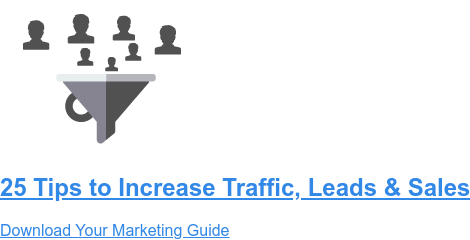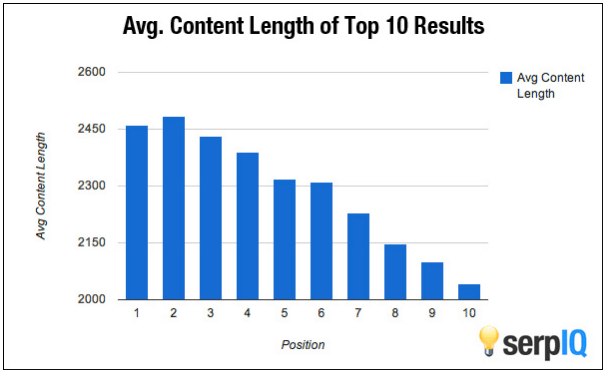There is a ton of small business SEO tips on the internet. That’s because anyone with a website can call themselves an internet marketing and SEO expert.
Here's the thing about SEO...
SEO has changed a lot over the last few years and much of the advice you will read from most sources is either very basic or outdated.
Today, so much of the advice that the so-called SEO Gurus spout is more of myth than truth.
To get real results from SEO, you must forget the old tips you that you have learned but don't work and learn new the new tactics that do work.
Today, I am here to show you how I grew my old site (before I joined PIC) from practically zero search traffic to over 3,000 organic sessions per month in a year by ignoring most of the SEO tips that you find online.


Here’s the thing...
I am not going to talk about same basic SEO tactics like title tags, keyword research and interlinking. You can read about that on almost any SEO or inbound marketing blog.
Instead, I am going to explain how a counterintuitive approach to old SEO tips helped me build my traffic.
Before I jump into all this, I want to give a shout out to Brian Dean of Backlinko.com.
He is a true thought leader in the new school thinking of SEO and is tearing down the walls and beliefs of the old thinking of SEO. Check out what he learned about SEO after analyzing 1 Million search results.
SEO Tip #1 to Ignore: You Must Update Your Site Regularly with Fresh Content

I know, this is a hard one to believe.
After all, everyone says that Google loves websites that regularly update their site with fresh content.
But that simply isn’t true and I can proved it to you!
I actually went over a year between posting a new blog post.
The last new blog post that I published was my Local Business Listings post on May 24, 2015 with the url /local-business-listings/. (This post is now here on the PIC blog).
But that doesn't mean I didn't do anything to the post.
Here, I will explain...
 As you can see in the weekly graph above, this post wasn’t getting much organic traffic in the first few months. Traffic was gradually picking up, but it only hit over 25 organic pageviews twice in four months.
As you can see in the weekly graph above, this post wasn’t getting much organic traffic in the first few months. Traffic was gradually picking up, but it only hit over 25 organic pageviews twice in four months.
Obviously, this post was working as I hoped and something had to be done.
I could have just moved onto the next post of a content calendar, but that would have done nothing to help that post.
Instead, this is what I did...
On September 20, I updated the post and republished it with the new the url, /local-business-listing-sites/.

As you can see from the monthly graph above, this single post gradually saw more and more traffic after the change and is now getting over 600 organic pageviews/month.
Why did this happen?
It is because I didn’t just publish it and move onto the next blog post of a content calendar.
Instead, I monitored that post, analyzed it and re-optimized it when it wasn't performing well.
Here's how I re-optimize a post
- Reviewed the keywords the post was showing up for with high impressions and some clicks.
- Analyzed keywords competing publishers were using in their titles to rank on the first page for the new keyword
- Updated the post content to include those keywords as well as related words where it made sense.
- Used the keywords and related keywords as H tags in article where it makes sense.
- Updated any content that was out of date or needed updated.
- Changed the published date of post to date it was updated.
Instead of publishing content according to a schedule, I nurtured a post over many months to ensure it was optimized correctly for the keywords I was targeting and performing to my satisfaction.
That single post went from bringing 25 organic sessions/month to over 600!
If you look at the site-wide organic traffic, you can see that organic search traffic to the entire site started to increase steady after the update and without publishing a single new blog post for over a year!

As you can see, having to publish fresh content on a regular basis is a complete myth.
SEO Tip #2 to Ignore: You Need to Build a Bunch of Backlinks

You have to be very careful when researching and learning about building backlinks. There is a lot of advice out there about building backlinks to your website, and a lot of it can be pretty devastating to your business.
If you don’t believe me, read about my experience with Black Hat SEO (still live on my soon to be gone old site).
The truth is that most small business websites don’t usually need many backlinks.
Now, I am not saying backlinks aren’t important, and you don’t need them. Links are one of the top 3 ranking factors Google uses for search rankings.
All I am saying is you don’t need a ton of backlinks.
Why?
- Your competitors aren't building links - Unless they have an inbound marketing agency working for them, they are attending to their business, not actively building links.
- Small business niches aren't highly competitive online - Unless your an injury attorney, bar and restaurant or in a similar industry, most small business niches are not highly competitive online, especially if you are a local business.
- Quality over quantity - A few high quality links from relevant sites are more powerful than a bunch of links from irrelevant websites.
- Local search targeting - Google has concentrated on giving local users results targeted to where they are. Unless your local area is saturated with your type of business, you should be able to show up in search results with a minimal number of quality backlinks.
The amount of links you need will always depend on your industry, competition and quality of your earned links. Regardless, with a little bit of work, you can get the quality links that will give your website a boost in the rankings.
To be honest, my link profile for the Local Business Listings post isn’t that impressive.
But check this out...
- I only did a small outreach campaign after publishing.
- I earned around 10 backlinks from other relevant sites
- The post ranked on the first page of Google for over 30 keyword terms with over 7000 search impressions per month.
- It's was slowly rising from the bottom of Google's first page for these terms.
- More rounds out outreach are planned, and that will only increase the rankings and keyword terms.
That isn’t too shabby considering I have barely done any outreach to promote this blog post, which leads me to the next myth.
SEO Tip #3 to Ignore: If You Publish Great Content, People Will Find It

This is like the old adage, if a tree falls down in the forest and there is no one around to hear it, does it make a sound?
There are over 2 Million blog posts published each and every single day. If you expect people to find your awesome, epic blog post on it’s own, you are for a rude awakening.
The truth is that you have to market and promote your content and business if you want to earn backlinks, receive social shares and get traffic from Google.
But here’s the thing…
Outreach and content promotion isn’t sexy. In fact, it is rather time consuming, which is why many business and website owners don’t do it.
Here is a little secret….
A little bit of content marketing can go a lot a long way!
- I sent out between 200-300 emails to get those links for the Local Business Listings post.
- With minimal work, I was able to get the blog post ranked for low to medium competition keywords that drive continuous traffic to this site.
And you know what?
That traffic then converts into subscribers and leads!
While the Local Business Listings post has only converted a little over 120 subscribers during that year it was live on my old site, I saw an overall increase of 22% in subscribers during the first 5 months of 2016.

At that time, I also had 2 other lists for visitors to join that have gained over 2200 subscribers total from June 1, 2015 - May 31, 2016.
SEO Tip #4 to Ignore: You Need to Publish a Lot of Content to Keep Your Rankings

This myth is inline with Tip #1, but it is very different.
You might have read that in order to keep your ranking you have to:
- Publish as often as possible
- Publish blog posts weekly
- Or at least publish a post every month
You see, removing content can actually help your rankings.
Check this out...
When the Local Business Listing post was live on my old site, I only had 4 blog posts published.
But that wasn’t always the case.
Prior to the spring of 2015, I believed this myth, and I tried whipping up post after post.
Until I updated my Local Business Listings post, I had a total of 8 blog posts.
At that time, I decided to trim the fat by removing 50% of my blog posts, and keep the best of the best. I ended up with only 4 blog posts.
This is what you have to understand…
- It ISN'T about the quantity of the content on your site.
- It IS about the QUALITY of the content on your site!
It used to be said that 400-500 words was enough for a blog post to rank well, and anything longer is worthless because people probably won’t read it.
That just isn’t true...
SerpIQ.com analyzed content length of the pages ranking on the first page the Google's results and reported that those pages had an average of over 2000 words!
 Image Credit: blog.serpIQ.com
Image Credit: blog.serpIQ.com
But this content isn't full of fluff.
These are in-depth articles stuffed with awesome information that the reader was looking for.
Now, I don’t hold that 2000 word mark as a Golden Rule, because there is a lot of quality content ranking well with less. In fact, many of my posts are less than the 2000 word mark and still ranking well.
So you don’t have to strive for 2,000 words. Instead, you just need to understand that in-depth, high quality content is the way to go.
SEO doesn't work over night, You have to take time and work at it.
- Discover the right topic
- Research keywords to target
- Create the content
- Publish the content
- Promote the content
- Analyze and re-optimize the content
- Repeat steps 5 & 6 as necessary
Take Aways
You have to understand that SEO evolves on a regular basis, and many small business SEO tips are old and outdated.
In this post, I showed you that a reasonably small site can rank, attract visitors and convert them into subscribers and leads with a small amount of content and backlinks.
I also also showed you that you don't have to published regularly and that a small amount of content promotion can go a long way.
If you follow these true SEO tips, I am confident that you can see success in your organic search traffic.
